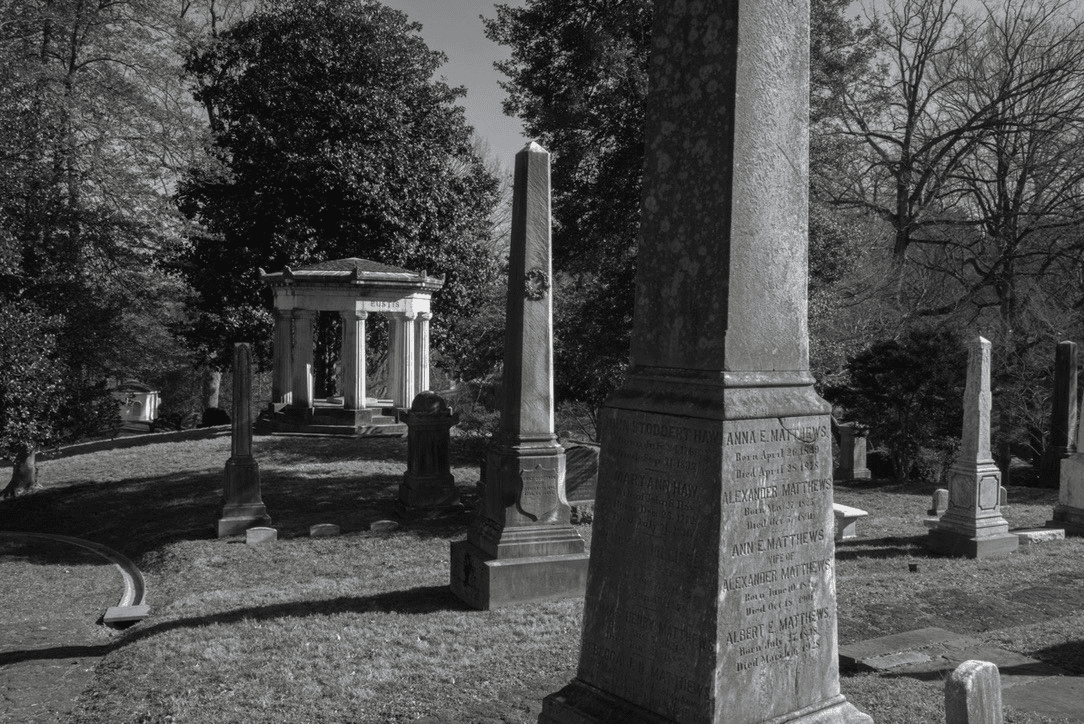Mapping Georgetown: Corcoran Recollections and Cemetery Walks
By • November 1, 2021 0 1287


Andrea Seiger’s story-map about William Corcoran for Mapping Georgetown. Courtesy Mapping Georgetown.
With the festivities of Halloween (from Holy Eve or All Hallows’ Eve) behind us, we now pay tribute on Nov. 1, as we celebrate All Souls Day and the Day of the Dead. Owing to the generous, dedicated and devoted work of generations of staff and volunteers who’ve made Georgetown’s cemeteries such sacred spaces, many, many memorable souls are cherished and remembered upon this day.
This Mapping Georgetown story by Andréa Seiger is a fitting example of one such soul who lived a fascinating Georgetown life. We are so thankful to Ms. Seiger for such a valuable contribution to our local history.
Author of “111 Places in Washington That You Must Not Miss,” Seiger is a tour guide of frequent Politics and Prose fame. Her Instagram account urbansafaridc111 lists her as “Tour guide and explorer” and she entices her followers to “Enjoy DC and the world through my eyes!” Seiger offers this story of one of our legendary and iconic residents resting in Oak Hill Cemetery, William Corcoran (1798 – 1888).
Corcoran is an example of one of the many characters Seiger highlights in her walks through Oak Hill Cemetery located at 3001 R St. NW. Corcoran’s story threads Georgetown elements together like pieces in a prized puzzle. His life’s narrative connects the Oak Hill Cemetery (established from land he endowed) to the landmark gold-domed bank at the corner of Wisconsin Ave. and M St., to an engaging talk at a Georgetowner Cultural Leadership Breakfast by the Director of the American University Museum, Jack Rasmussen, on the distribution of the Corcoran Gallery of Art’s collections following its closure in 2014.
Andrea’s Story:
Oak Hill Cemetery is full of great D.C. stories, not the least of which is of William Corcoran who donated the land and founded the cemetery.
He was a banker and founder of the Corcoran & Riggs Bank, later known as Riggs National Bank. American art was his jam and with his grand collection he founded the Corcoran Gallery of Art (the original building is now the Renwick Gallery.)
He restored a house on Farragut Square to create one of the first Italianate houses in D.C. He hosted the hottest ticket in town with his weekly stag party “the chief rendezvous for distinguished men,” aka a smoker. His wine cellar was legendary. He loved to present the ladies fine Hendacre at his frequent parties with a bounty of flowers from the lush garden.
As a friend to first Lady Sara Polk [in the late 1840s], he offered her design tips to redecorate the White House and ran errands for her on his frequent trips to New York.
Louise, his only daughter, had a scandalous romance with a Portuguese foreign secretary whom Corcoran implored President Buchanan to send back to Portugal. To no avail, Foreign Secretary Muruagea, challenged Corcoran to a duel for the affront, which Corcoran refused.
William Corcoran must be spinning in his grave! The two biggest organizations he founded were ruined by subsequent generations.
Riggs National Bank leadership were all removed for bank fraud and money laundering for foreign dictators, most notably Augusto Pinochet of Chili, whose people would bring stuffed bags of cash to put in his personal account. The bank was levied with the largest penalty in U.S. banking history. It was sold to PNC. And Corcoran’s beloved Corcoran Gallery was mismanaged, closed and most of its collection dispersed to D.C. museums and George Washington University.

William Corcoran burial site at Oak Hill Cemetery. Photo by John Dean @ johndeanphoto.com,
—
These Mapping Georgetown stories can be viewed in full at https://mappinggeorgetown.com/2021/11/01/day-of-the-dead-andrea-seiger/.
We invite you to add your story to our Mapping Georgetown collection. Blank templates can be printed from the home page of www.mappinggeorgetown.com or picked up from The Georgetown Public Library.
To learn more about the Mapping Georgetown project see https://georgetowner.com/articles/2021/07/19/marilyn-butlers-vision-for-mapping-georgetown/. Marilyn Butler can be reached at marilyn.butler@gmail.com

